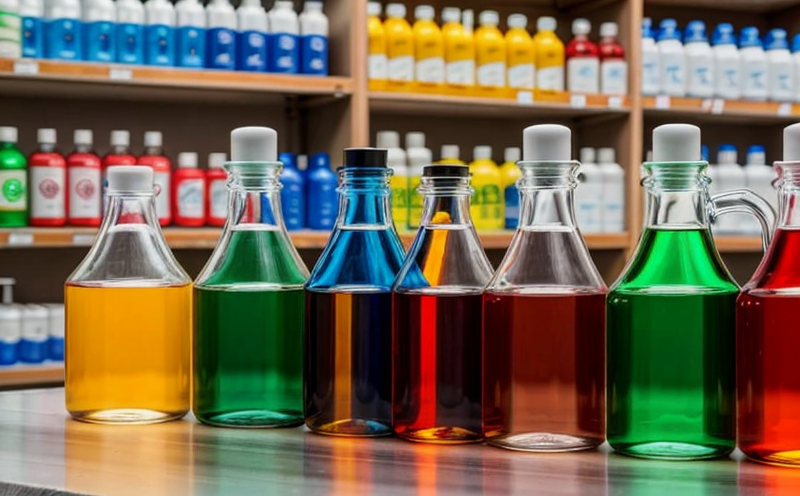Testing of allergenic disperse dyes in children’s clothing
The use of disperse dyes in textiles, especially for children's clothing, is a subject that requires stringent testing to ensure safety and compliance with international standards. Disperse dyes are water-insoluble pigments used primarily in the production of synthetic fibers such as polyester and nylon. These dyes can be released into the environment during washing or through other means, posing potential risks, particularly for children who may come into close contact with their clothing.
Our laboratory specializes in testing disperse dyes to identify allergenic components that could trigger allergic reactions in children. This service is crucial not only from a regulatory compliance perspective but also from a public health standpoint. The focus on children underscores the importance of ensuring that materials used in children's clothing are free from harmful substances.
The testing process involves several steps, including sample preparation and analysis using advanced chromatographic techniques to identify potential allergens. This includes not only the dyes themselves but also any additives or by-products formed during dyeing processes. The laboratory adheres strictly to international standards such as ISO 10343 for disperse dye identification.
Our team of experts uses state-of-the-art instrumentation, including High-Performance Liquid Chromatography (HPLC) and Gas Chromatography-Mass Spectrometry (GC-MS), which are essential in detecting minute traces of allergens. This precision is critical when dealing with substances that can cause severe allergic reactions even at low concentrations.
The testing process begins with the careful selection of samples, ensuring they represent the dye used in the production of children's clothing. Once collected, these samples undergo rigorous analysis to identify any potential allergenic compounds. The laboratory’s compliance with ISO 14001 and OHSAS 18001 ensures that all testing procedures are conducted under controlled conditions, minimizing the risk of contamination or error.
The results of our tests provide invaluable information for manufacturers, ensuring they meet stringent safety standards set by regulatory bodies such as the European Union’s REACH regulations. Compliance with these regulations is not only a legal requirement but also helps build consumer trust in the quality and safety of products.
In addition to identifying allergenic compounds, our laboratory can also provide detailed reports on the dyeing process and any potential risks associated with the use of disperse dyes. This information is crucial for manufacturers looking to improve their processes or switch to safer alternatives.
Our service extends beyond mere testing; we offer comprehensive advice and recommendations based on our findings, helping clients make informed decisions that align with both regulatory requirements and best industry practices.
Applied Standards
| Standard | Description |
|---|---|
| ISO 10343-1:2015 | Determination of disperse dyes in synthetic polymeric materials by high-performance liquid chromatography (HPLC) |
| ISO 14001:2015 | Environmental management systems - Requirements with guidance for use |
| ISO 18001:2017 | Occupational health and safety management systems - Requirements with guidance for use |
| REACH Regulations | Registration, Evaluation, Authorization and Restriction of Chemicals |
The laboratory strictly adheres to these international standards to ensure accurate and reliable results. Our commitment to quality is reflected in the precision of our tests and the consistency of our findings.
Benefits
Testing for allergenic disperse dyes offers numerous benefits to manufacturers, retailers, and consumers alike:
- Regulatory Compliance: Ensures strict adherence to international standards such as REACH regulations.
- Risk Mitigation: Identifies potential risks early on in the production process, minimizing liability for manufacturers.
- Consumer Trust: Building consumer confidence by ensuring products are safe and free from harmful substances.
- Competitive Advantage: Differentiates your product in a crowded market by showcasing your commitment to safety and quality.
- Process Improvement: Provides valuable insights into the dyeing process, helping manufacturers refine their techniques for greater efficiency.
- Sustainability: Helps companies meet sustainability goals by choosing safer alternatives where necessary.
In summary, our testing service not only ensures compliance with legal and regulatory requirements but also supports sustainable business practices that are essential in today’s market environment.
Quality and Reliability Assurance
At our laboratory, we take pride in maintaining the highest standards of quality and reliability. Our commitment to excellence is reflected in every aspect of our operations:
- Certification: We are certified according to ISO 17025:2017, ensuring that all testing procedures meet international standards for competence.
- Expertise: Our team consists of highly qualified professionals with extensive experience in textile and chemical analysis.
- Technology: Leveraging the latest chromatographic technologies, we ensure accurate and precise results.
- Controlled Environment: All testing is conducted under controlled conditions to minimize the risk of contamination or error.
- Continuous Improvement: We are committed to continuous improvement in our processes and methodologies.
Our dedication to quality and reliability is what sets us apart from other laboratories, ensuring that we deliver accurate and trustworthy results every time.





